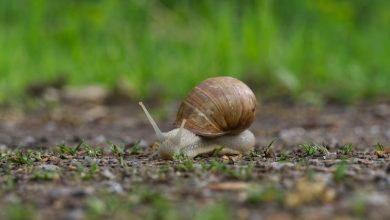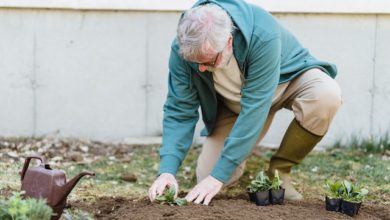
How to Get Free Seeds
Every successful flower and vegetable garden needs seeds, but the cost can add up rapidly at the beginning of the growing season.
Thankfully, there is an alternative, frequently a free way to acquire seeds and expand your supply. Free seeds can be obtained in a variety of methods, mostly through online seed swap forums, libraries, and exchanges, the specifics of which can be discovered online.
It will not take long for you to amass your own collection of rare types to design a landscape full of flowers and vegetables that are exclusively yours. Additionally, you will have the chance to buy more uncommon types that aren’t commonly distributed.
You should save your own seeds if you want to raise your own food and are looking for inexpensive garden ideas.
Having control over the origin and enabling the types you are producing to adapt to the particular conditions in your own garden are both benefits of preserving your own seeds. The most effective and economical approach to growing your garden is by saving your seeds.
Furthermore, picking your own seeds makes sense from an ecological perspective because there is no need for packing or transportation. How to get free seeds has recently attracted a lot of attention, particularly from people trying to grow more of their own food.
Here are a few simple, doable ways to receive free seeds, so start incorporating them into your gardening practice right away. Discovering where to get free plants will become second nature if you follow the advice we’ve provided below.
SET UP A LOCAL SEED CIRCLE

An easy concept is a seed circle. Each of you signs up to conserve seeds for a specific variety of crops or flowers as part of a group made up of friends, coworkers, or neighbors.
It is great if each person preserves seed from a fruit or flower that they really like and have successfully grown since they will have a wider selection of plants from which to choose better seeds.
Therefore, the person to grow seeds from your circle is the one in your group who is extremely interested in growing, let’s say, tomatoes.
When you preserve your own seeds, you will each receive a large quantity (much more than one person can utilize), allowing you to swap seeds with your neighbors at the conclusion of the growing season and receive a large number of seeds at no cost to you.
Alternately, give each person two veggies or flowers since preserving seeds doesn’t really need any work and is a smart backup plan in the event that one crop fails.
If you want to get the most out of your crops on a budget, make sure you heed our recommendations on how to produce fertilizer and fertilize plants for free as well.
JOIN A SEED LIBRARY
You can find seeds for free by visiting seed libraries set up in public libraries and community centers or by checking out those online.
Additionally, it is a chance for you to share a surplus of your seeds, and if you are new to gardening, you can benefit from what is provided. After harvesting your crops in the fall, take what you need and return with your own seeds that you have collected.
There are now seed libraries where well-organized teams can pool resources and exchange knowledge. The San Jose Public Library is very similar to other public libraries, with the exception that you can borrow seed packets along with your books.
It is estimated that there are more than 650 seed libraries in about 48 states in the US.
Visitors to the library are invited to take packets of seeds home with them to sow, which are kept in a salvaged card catalog. Sharing and fostering a sense of community are the goals of the seed library.
FIND OUT ABOUT SEED SWAPS
Local seed exchanges have gained a lot of attention, and there are thousands of them worldwide, with more springing up every day. For information on seed exchanges in your area, check your neighborhood library, community center, or internet.
According to the nonprofit organization Seed Savers Exchange, exchanging seeds aids in the preservation of rare plant species, the promotion of biodiversity, and the provision of food security for many farmers and gardeners.
Seed swaps are exactly what they sound like: a place where gardeners can get together and exchange seeds. Their operation is straightforward. With the rise in popularity of kitchen garden concepts, they are also becoming more and more well-known.
Perhaps you’ll be fortunate enough to discover that the seeds are also being exchanged along with the free plants.
FOLLOW ONLINE SEED EXCHANGES
Online seed exchanges enable those who are passionate about growing flowers from seeds to do so without ever leaving their homes. They are also an excellent resource for locating uncommon types, rare and heritage seeds, and other items you might be interested in.
For seed exchanges, conduct an online search. By performing daily searches for “free seeds,” keep an eye out for postings for “free seeds” on Craigslist and Facebook Marketplace.
The word about seed exchange is being spread by websites like the nonprofit Seed Savers. It is a group of gardeners and seed guardians that share and trade unusual seeds that you might not be able to get elsewhere.
Create a wish list of the seeds you are interested in for your flower bed ideas or vegetable garden after you register and browse the seeds supplied by other users.
TAKE ADVANTAGE OF FREE OFFERS
In terms of where to receive free seeds, neighborhood businesses, public gardens, nonprofit organizations, and other groups like community gardens and allotments can be quite giving. You will undoubtedly come across folks giving away seed packets for free at exhibits and events in the spring.
Keep a look out for giveaways because many for-profit and nonprofit companies give away seed packets to reward consumers, conserve pollinators, or serve the public interest.

COLLECT YOUR OWN SEEDS
By storing part of your own seeds for the upcoming season, once you have a planted plot for your flowers and veggies, you can further save expenditures.
This is a great method to keep gardening expenditures down, and over time, the seeds you collect will become more and more suited to the particulars of your garden.
If you want to learn how to receive free seeds, I suggest starting with simple plants like poppies and nasturtiums, then branching out when you feel more comfortable.
With free garden ideas like these, you should be able to experience the fulfillment that comes from creating something from nothing as long as you keep them dry and sow them freshly.
Free Heirloom Seeds
A grassroots initiative called Free Heirloom Seeds aims to equip people and communities with the tools they need to meet their fundamental requirements without the use of pesticides, corporations, or genetic engineering.
They are able to provide the general public with free heirlooms and open-pollinated seeds, thanks to donations.
This was initially just a small family endeavor, but it has since expanded to become a global undertaking.
From their retail location, Stone Spirits, in Arcata, California, FreeHeirloomSeeds.org is run.
Donations to expand their seed supply, pay for postage, packing supplies, and seed packaging
Free seeds from the Government
Everybody has access to free seeds provided by the government. The USDA website can be used effectively if you ask the right questions and do so.
The USDA’s Plant Genetic Resources Unit (ARS) of the Agricultural Research Service provided the seeds (PGRU).
Here are the steps to follow:
Start by going to the National Plant Germplasm System (NPGS) and follow
Enter the type of seed into the search box
NPGS displays all the plants in the system with that keyword in the description
Click through the detail page
Order seeds
Click check out
FAQs
What is seed swap day?
In commemoration of the long-standing American custom of exchanging seeds with neighbors, the final Saturday in January is designated as National Seed Swap Day.
Where can I get free seeds online?
The U.S. government is one place to get free seeds. For the goal of research and plant breeding, the USDA provides seeds and plants. They offer a variety of uncommon and unique fruits and veggies that are hard to find elsewhere.

Why does the USDA make free seeds available?
Plant breeders, seed companies, and other companies engaged in plant genetics can take advantage of this free service provided by the government.
Home gardeners are not the target audience for this service, but if you ask nicely, you might be able to use it.
How can you order seeds from the USDA?
Utilizing the USDA website, you can buy seeds. It is a difficult website that is neither user-friendly nor designed for use by backyard gardeners because it is meant for organizations active in plant breeding and genetics.
How do the free seeds get sent to you?
U.S. mail is used to deliver them. Even paying for them is not necessary. However, if you decide to handle the shipping costs yourself, they will want a shipping account number. This saves them money if you cover the cost of shipping.
Are only seeds available from the USDA? Is there anything else? No, the USDA also sells rootstock and plant cuttings. What an incredible website it is.



